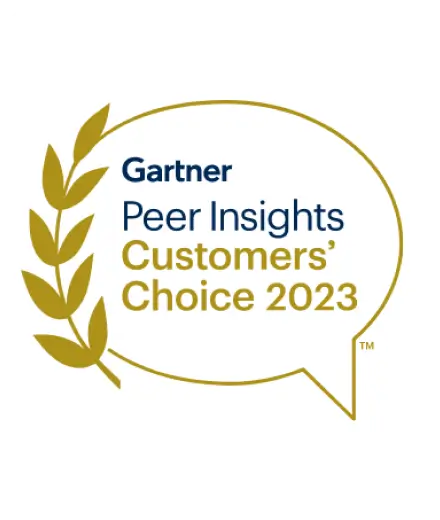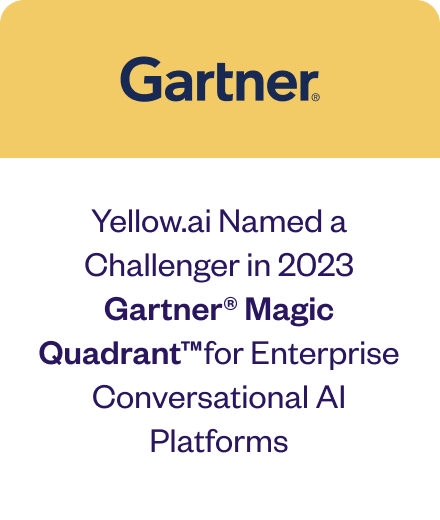Employee engagement trends are the ever-changing seasons of the business world. In recent years, we’ve navigated a maze of challenges: a global pandemic, complex supply chain issues, and economic ups and downs. These events haven’t just nudged but have entirely revolutionized how we approach employee engagement.
Employee engagement is a critical pillar for organizational success, and as per Lattice’s state of people strategy report 2023, 86% of HR teams are willing to put more effort into improving employee engagement than they have in the past, 41% are making it their top priority.
Every new generation brings a twist to the workforce, and employee engagement trends change drastically. Especially with generative AI coming into play, the landscape of work and employee engagement is evolving rapidly.
This makes it more than necessary for organizations to stay on top of the latest employee engagement trends. So here we are, ready to dive deep into the 2024 employee engagement playbook.
If you’re a business leader or manager looking to stay ahead of the curve, this blog is your ticket. We’re about to unpack the latest employee engagement trends that will keep your team happy and thriving. Let’s explore how staying sharp with these trends can make a difference throughout an employee’s journey with your organization.
Related must-reads:
- Employee pain points – How to identify and fix them?
- How to create employee experience strategy in 2023? Get a free template
- Recruitment chatbot – Ways to use for recruitment process
- HR chatbots – Benefits and Use cases
- Role of AI in employee performance management
What is employee engagement?
Employee engagement is a term coined by William Kahn in 1990 that describes, qualitatively and quantitatively, the nature of the relationship between an organization and its employees.
It is the vibrant pulse of dedication and connection an employee feels towards their work, specific role, and the broader organization. These engaged individuals are the lifeblood of a company’s culture, motivated by far more than mere salary or promotion prospects. Their daily efforts are ignited by a genuine passion and a deep desire to impact the organization’s journey to success significantly. This emotional investment distinguishes engaged employees, transforming them into invaluable pillars within any team.
When organizational psychologist William Kahn broke down employee engagement, he highlighted three aspects that hit the nail.
- Physical engagement: This concerns the mental and physical energy your team members will pour into their tasks. It’s like asking, “Are they ready to roll up their sleeves and dive in?”
- Cognitive engagement: Think of it as how well your employees’ goals click with the organization’s. It’s about understanding the ‘why’ behind their work and how that knowledge shapes their efforts towards those collective aims.
- Emotional engagement: This one’s a biggie – it’s all about the feels. How do your employees feel about the company? Creating a meaningful and understanding environment can do wonders for their ability to excel. It’s like fostering a space where they don’t just work – they thrive.
Each of these aspects plays a crucial role in firing up your team’s engagement levels, and when they’re in sync, you’re looking at a powerhouse of productivity and positivity. But it doesn’t end here. To build a truly robust system for employee engagement, it’s crucial to stay sharp and tuned in to the latest employee engagement trends. Keeping an eye on these evolving trends ensures your strategies are always ahead of the curve, resonating with your team’s current and future needs.
Top 15 employee engagement trends for 2024
According to Gallup’s extensive research on employment engagement, it is consistently shown that employees who are highly engaged deliver superior business results compared to their other employees. This holds true across various industries, regardless of company size, nationality, and economic conditions.
However, a striking observation emerges from this research that only about 23% of employees are truly engaged globally, and this number slightly increases to 32% in the U.S. This highlights a significant opportunity for improvement in employee engagement strategies.
So, here are the latest trends in employee engagement that will help you to shape the landscape in your organization.
1. Embracing a people-first culture
One thing is clear, the heart of any thriving business is its people. Adopting a people-first culture is not just a trend but a crucial pivot for HRs and organizations aiming to foster a healthy and vibrant work environment. This approach is rapidly becoming a cornerstone of successful business strategies.
According to Great Place to Work’s survey of more than 1.3 million employees, its is shown that the payoff of people-first cultures shows up in employees’ intention to stay at their companies (88%), referrals (91%), discretionary effort (90%), and agility (87%) — nearly double that of typical workplaces across all measures.
In a people-first culture, it’s all about crafting a workplace that doesn’t just hear but actively listens to and values its employees. Think of it as putting on a pair of headphones to tune into the needs and aspirations of your team members. When employees feel recognized as individuals first, the results are remarkable. They not only turn happier and more engaged but also become more attuned to the needs of your customers. It’s like nurturing a garden; when you care for the plants, they flourish – and so does the entire garden.
2. Offering innovative benefits packages
As we navigate the changing workplace landscape, one employee engagement trend is becoming increasingly clear: the rise of innovative benefit packages. Companies are now stepping up, realizing that the traditional one-size-fits-all approach to employee benefits no longer cuts it. It’s about going beyond the standard health insurance and retirement plans to offer a bouquet of unique perks that resonate with individual lifestyles and needs.
So, what’s the secret to making your benefits package a talent magnet? It’s simple:
- Tune into your team’s unique needs.
- Start with surveys to pinpoint gaps in traditional benefits and discover perks that genuinely resonate.
- Emphasize well-being with mental health support and wellness incentives.
- Introduce financial literacy programs and loan assistance for financial empowerment.
- Regularly assess and refine your benefits based on employee feedback and engagement levels.
The shift in the workplace has brought about a fundamental change in what employees value. Gone are the days when free snacks or a foosball table were enough. It’s about benefits that genuinely make your team feel valued, appreciated, and motivated. This approach transforms your benefits package from standard to stand out, making it a powerful tool for attracting and retaining top talent.
3. Prioritizing work-life balance
The pandemic-era shift to remote work has set a new standard for workplace flexibility, emphasizing work-life balance as one of the key employee engagement trends. This approach is not just about happier employees rather it’s about boosting their productivity, engagement, and connection with the business.
The lesson of the past few years is clear: enabling employees to lead better lives outside of work is a surefire way to boost their engagement and productivity on the job.
With most job functions not requiring a daily office presence, progressive companies are adopting flexible schedules, work-from-home options, and remote working policies. The stats speak for themselves: FlexJob reports that 75% of workers find they’re more productive at home, experiencing fewer distractions, reduced commute stress, and less office politics. Deloitte’s findings also reveal a growing trend towards the gig economy, with 62% of millennials considering work/ life balance is something they are striving for.
In essence, embracing work-life balance isn’t just beneficial for employees; it’s a cost-effective strategy for companies, proving to be an essential element of a dynamic and engaging workplace
4. Leveraging cloud-based technology
Integrating cloud-based technology is becoming indispensable in human resource management; cloud technology is driving the business from performance management systems and pulse surveys to benefits platforms and recognition tools.
But what is the reason that this trend is catching fire? Cloud tools can offer a win-win scenario for both employers and employees. They are playing a massive role in HR departments by simplifying and streamlining processes and leading to more efficient and effective outcomes. These tools open a channel for the employees with a seamless way to engage with their work and the organization, irrespective of where they are.
This shift towards AI-powered HR technology is revolutionizing how we approach employee engagement. It creates an environment where employees can thrive, connect, and engage with their work more meaningfully. The use of cloud-based solutions in HR is not just a passing trend – it’s a fundamental shift that promises to shape the future of employee engagement for years to come.
5. Redefining “human” in HR
Technology’s role is becoming increasingly significant in building an engaged workforce. However, as we embrace this digital advancement, the essence of humanity in HR remains more crucial than ever. It’s about striking the perfect balance between technological efficiency and emotional intelligence.
According to EY, 87% of employees say empathy is essential to fostering an inclusive environment. This statistic underscores a fundamental truth: even in a digital world, people yearn for compassion, appreciation, and recognition. The challenge and opportunity lie in elevating the human element in HR amidst our digital transformation.
Related read: 15 Practical HR automation examples for HR process management
This is where emotional intelligence meets technology. Incorporating technology like AI chatbots with features like sentiment analysis and emotional intelligence can subtly enhance this human touch. These tools don’t just perform tasks; they understand and respond to the emotional nuances of employee interactions. This combination of technology and empathy forms the bedrock of stronger interpersonal bonds, bridging the gap between digital efficiency and human connection.
Real-time support at scale with generative AI

6. Furthering diversity and inclusion in the workplace
Diversity and inclusion (D&I) are pivotal to business success in today’s corporate landscape. McKinsey research states that the companies in the top quartile for racial and ethnic diversity are 35 % more likely to have financial returns above their industry medians. This statistic highlights the benefits of a diverse workforce, which brings a plethora of fresh perspectives and innovative problem-solving approaches.
However, diversity alone isn’t the end goal. The combination of diversity and inclusion creates a genuinely dynamic workplace. An inclusive culture is one where every individual feels valued and a sense of belonging. Currently, 76% of job seekers prioritize workplace diversity, and with the global D&I market expected to grow from USD 9.3 billion to USD 15.4 billion by 2026, it’s evident that businesses are taking notice.
Despite this growing focus, communication gaps remain. 17% of employees feel that leaders don’t adequately communicate about D&I. Thus, it’s crucial for your organizations to not only implement D&I initiatives but also to communicate these policies clearly and continuously assess their impact. Doing so ensures that your efforts in fostering diversity and inclusion translate into a more innovative, collaborative, and successful workforce.
7. Leveraging AI/ML tools in the workplace
Integrating Machine Learning (ML) and Artificial Intelligence (AI) in the workplace is not just a passing trend. As we advance, these technologies are becoming increasingly prominent in reshaping employee engagement strategies. A recent survey by Gartner found that 52% of HR leaders aim to use generative AI to improve employee experience.
Tech-forward companies are already reaping the benefits of incorporating AI and ML in various work functions. From streamlining operations to enhancing decision-making, the impact is significant and far-reaching.
A prime example of this transformation is the use of AI-enabled chatbots. They are revolutionizing employee engagement by offering round-the-clock support for HR inquiries and feedback collection. These tools not only automate routine tasks but also provide valuable insights from employee interactions. Chatbots are enhancing operational efficiency and workplace engagement by facilitating immediate responsiveness and personalized interactions, making them a pivotal element in the modern workforce.
How AI helped Aditya Birla Fashion and Retail enrich employee experience

8. Transforming employees into brand ambassadors
In today’s digital landscape, employees are emerging as influential brand ambassadors. Their social media channels can significantly amplify a company’s brand message, creating a ripple effect that traditional corporate branding can rarely match. When employees share content, it resonates more authentically, garnering up to 561% more engagement than when the company shares the same message. This approach boosts brand awareness and strengthens employee engagement, retention, and the overall employee-employer relationship.
However, turning employees into effective brand ambassadors requires more than just enthusiasm. Firstly, they must be well-versed in the company’s values and narratives. Secondly, the organization must be where people love to work. Lastly, clear communication of branding campaign goals is vital.
It’s not about suddenly springing a branding initiative on employees; it’s a gradual and strategic process. You can effectively turn your workforce into a network of authentic, passionate brand ambassadors by aligning employees with the company’s vision and values and fostering a culture they’re proud to be part of. This elevates the company’s brand and creates a more connected and motivated workforce.
9. Fostering clear career growth trajectories and skill building
Career development and growth are at the heart of employee engagement. 47% of today’s workforce, primarily the highly educated, seek roles that offer personal and professional advancement. Companies that provide diverse and adaptable learning solutions tend to retain their employees longer, as career progression is a key factor in job satisfaction and loyalty.
Organizations are investing in flexible e-learning platforms to meet these expectations, allowing employees to learn at their convenience. This approach to professional development, where employees have control over their learning pace and content, aligns with the modern desire for autonomy and personal growth. It’s a strategy that empowers the individual and aligns their growth with the company’s objectives.
Yet, it’s not solely about learning opportunities. Visible career progression within the organization is crucial. Ensuring that promotion and recognition are fair, frequent, and timely is essential in keeping employees engaged and motivated. In an era where career mobility is highly valued, creating an environment where growth is not just possible but actively encouraged is vital to maintaining a committed and dynamic workforce.
10. Promoting workplace wellness
It is essential to recognize the significant amount of time employees spend at work and ensure that this environment contributes positively to their well-being. Stress from work can lead to disengagement and decreased performance, making wellness programs a critical component of employee engagement strategies. According to Gallup’s State of the Global Workplace: 2023 Report, 89% of employees with wellness programs are more engaged and happier with their jobs.
Effective wellness programs can significantly boost employee productivity and work-life balance. These initiatives are beneficial for employee health and financially advantageous for companies, contributing to a healthier bottom line. Ideas for wellness programs range from mental health training and coaching, team-building activities, and physical exercise options to flexible working hours, gym or yoga class subscriptions, and mindfulness app subscriptions.
Implementing a comprehensive wellness program goes beyond a mere employee benefit and here at Yellow.ai we emphasize on this comprehensive wellness of employees, recognizing the significance of their overall health, happiness, and workplace performance. To address these aspects, the company has also introduced the Yellow.ai Wheel of Wellness (WOW) initiative, targeting Mental, Physical, Financial, and Social Wellbeing.
11. Building an effective employee listening program
In today’s dynamic work environment, establishing an effective employee listening program is not just a trend but a critical aspect of employee engagement. Such a strategy is essential for understanding the pulse of the workforce, recognizing top performers, and ensuring that organizational programs effectively support employees. According to a survey by the Workforce Institute, 74% of employees feel more effective when they feel heard, underlining the importance of listening in boosting employee engagement.
Pulse surveys, with the help of chatbots, are an invaluable tool for effectively implementing this strategy. These surveys provide HR professionals with immediate insights into employee perceptions, concerns, and workplace atmosphere, especially during change or uncertainty. Organizations can swiftly address issues by regularly gauging employee sentiment and maintaining a positive and productive work environment.
An employee listening program is more than a method of gathering data; it demonstrates a company’s commitment to its workforce. This approach improves the employee experience and fosters a culture where everyone feels valued and heard. This leads to a more engaged, motivated, and effective workforce aligned with the company’s goals and values.
12. Collecting employee feedback regularly
Understanding what matters most to employees is essential for fostering a truly engaged team, and regular feedback is the key to gaining this insight. As workplaces evolve, especially with the shift towards remote working, innovative methods for collecting feedback have become increasingly important.
Chatbots present an effective solution for gathering employee feedback in this new work landscape. They allow for immediate, interactive responses, encouraging employees to share their thoughts promptly and honestly. This ensures that feedback is relevant and timely and fosters consistent engagement with internal communications.
Anonymity in feedback offered by chatbots is particularly beneficial. It allows employees to express their concerns and opinions openly, leading to more transparent and constructive communication. This approach is instrumental in building a workplace that genuinely listens to and acts on employee feedback, paving the way for a more harmonious and responsive organizational culture.
13. Timely and strategic employee recognition
Employee recognition is pivotal in boosting workplace motivation. As highlighted by Achievers, a staggering 90% of workers report increased motivation when recognized. Regular acknowledgment of individual and team achievements is crucial, reinforcing the significant impact of each employee’s contributions to the organization’s success.
Recognition fosters a sense of pride and belonging among employees. Celebrating accomplishments, whether big or small, encourages a culture of appreciation. This enhances individual performance and stimulates innovation, as employees who feel valued are more likely to contribute creative solutions and ideas.
By making recognition a key aspect of the organizational culture, you can foster stronger connections among team members. This consistent acknowledgment of efforts and successes builds a supportive environment where every employee feels integral to the collective achievements and goals of the company.
14. Introducing clear goal tracking
One of the hottest employee engagement trends that is really making waves is goal tracking. Gallup’s data shows nearly half of all employees are scratching their heads over what they’re supposed to be doing. That’s a big no-no for engagement. So, what could be the fix? It’s all about setting clear goals.
When employees have a crystal-clear roadmap of what’s expected, they’re not just ticking off tasks but building a sense of achievement and purpose. We’re talking about more than just daily to-dos. It’s about linking those goals directly to their performance. Think of it as upgrading from those old-school annual reviews to something more dynamic.
This shift to clear goal setting does wonders. It aligns even the most independent team members with the company’s bigger picture, turning everyday work into steps toward success. Plus, it keeps everyone on the same page and injects a healthy dose of continuous feedback into the mix. It’s like giving your team a GPS for their career path within your organization – and who wouldn’t want that?
15. Measuring key employee engagement factors regularly
When discussing employee engagement, imagine it’s a puzzle with many different pieces. No magic number says, “Hey, your employees are 100% engaged!” But, you know what’s a game-changer? The Employee Net Promoter Score, or eNPS for short. It’s like taking the temperature on how jazzed up your team is about recommending your company’s products and, just as importantly, your workplace to their circles.
Here’s the cool part: chatbots are stepping up as the unsung heroes in gathering this eNPS intel. They make it easy for your team to chime in with their opinions. Based on their feedback, everyone gets sorted into promoters, detractors, or the ‘just okay’ passives. It’s like a quick vibe check to see how your employees feel about the company.
Think of eNPS as that one piece of the puzzle that, while not the whole picture, gives you a pretty solid idea about your team’s engagement levels. And with chatbots in the mix, collecting this info becomes a breeze. It’s all about getting that insider scoop on your team’s engagement in an efficient and neat way.
How Yellow.ai can help level up your employee engagement?
Yellow.ai’s Conversational AI, a cutting-edge chatbot powered by natural language processing (NLP) and machine learning (ML), is revolutionizing employee engagement. Here’s how it’s making a significant impact:
1. Streamlining information access
Finding the correct information in large, decentralized organizations can be daunting. Yellow.ai’s AI-powered chatbot simplifies this process, allowing employees to access necessary data and effortlessly boosting productivity and agility.
2. Facilitating rapid feedback
Today’s workforce thrives on immediate feedback. Yellow.ai’s chatbot delivers this, offering quick, relevant responses and a platform for anonymous feedback. This direct line to HR and management makes employees feel valued and heard.
3. Enhancing team dynamics
Yellow.ai’s chatbot builds teams based on complementary skills and goals by analyzing employee data. AI can find members who fit and complement each other through ML and predictive data analysis. This fosters a work environment ripe for cohesion and collaboration, driving engagement and team efficiency.
4. Proactive workplace issue resolution
The chatbot’s real-time communication analysis enables management to conduct sentiment analysis, identify engagement issues, and intervene proactively. This strategic approach reduces attrition and boosts overall workplace satisfaction.
5. Personalized learning and development
Leveraging communication and performance data insights, Yellow.ai’s chatbot identifies personalized learning and development opportunities. This approach aligns with each employee’s goals and learning style, enhancing their sense of organizational value.
6. Promoting a culture of belonging
Through the analysis of internal communications and interactions, Yellow.ai’s chatbot aids in creating a workplace culture where every employee feels a sense of belonging.
7. Preventive measures
The platform’s ability to recognize and address potential red flags before they escalate is crucial in maintaining a harmonious work environment.
By integrating these features into its AI platform, Yellow.ai is improving the efficiency of HR processes and fundamentally enhancing the employee experience. This comprehensive approach to employee engagement ensures that each team member is productive, genuinely satisfied, and motivated in their role.
Conclusion
As we wrap up this exploration into employee engagement trends for 2024, it’s clear that the landscape is evolving at an unprecedented pace. From embracing a people-first culture to leveraging cutting-edge technologies like AI and ML, the strategies we’ve discussed are not just trends; they’re transformative shifts reshaping how organizations connect with their employees.
These advancements are central to integrating technologies like Yellow.ai’s Conversational AI. This AI-driven chatbot revolutionizes employee engagement by streamlining information access, enhancing team dynamics, providing rapid feedback, and offering personalized learning and development opportunities. It’s a tool that addresses the immediate needs of a diverse workforce and anticipates future challenges, positioning organizations to thrive in an ever-changing business environment.
In essence, the future of employee engagement is about harmonizing human-centric approaches with technological advancements, ensuring that each strategy is efficient but also empathetic and inclusive. As we move forward, the key for business leaders and HR professionals will be to stay adaptable, empathetic, and forward-thinking, ensuring that their engagement strategies not only meet the current needs of their workforce but also anticipate and adapt to the needs of the future.
Frequently asked questions (FAQs)
What are the key drivers of employee engagement?
The key drivers of employee engagement are safe and dedicated working environment, tools and processes, feeling valued and involved, psychological safety, fairness, ownership, autonomy, progression, leadership, work-life balance, company performance, multi-way feedback, committed coworkers, peer-to-peer relationships, shared values and recognition.
How can chatbots help employee engagement?
The chatbot is trained to ask for feedback while communicating with employees and analyzing the information. Furthermore, conversational AI platforms suggest strategies and solutions to improve employees’ work lives. These actions promote employee engagement while also collecting valuable insights for the organization.
Does employee engagement really drive productivity?
Employee Engagement Increases Productivity. Employee productivity is important to any business. The more productive your employees are, the more successful you’ll be as a business. According to Gallup, highly engaged teams are 21% more productive and have 28% less internal theft than those with low engagement.
What are some ideas to improve employee engagement?
Employee engagement tips
- Model your core values and mission
- Ask for and learn from feedback
- Make sure your managers are engaged
- Set up volunteer activities
- Support employees’ physical and mental health
- Recognize and reward top performers
- Send frequent employee engagement surveys
- Plan company outings
- Create employee resource groups
- Encourage passion projects
- Fine-tune your onboarding process
- Provide professional development and career path options
- Offer training opportunities and programs
- Remove unnecessary tasks from workflows
- Give employees flexible work situations
- Equip managers with employee engagement training
What is a chatbot for HR policies?
In HR, chatbots are AI-powered virtual assistants that automate and streamline various HR tasks. They interact with employees using natural language to handle inquiries, onboarding processes, and other HR-related functions, thereby enhancing efficiency and employee experiences.
How do I create a chatbot for recruitment?
Recruitment Chatbot: What is it & How to Build One
- Identify the Type of Chatbot You Want to Build.
- Design a Conversational Job Application.
- Integrate the Bot with Your Preferred Management Tool.
- Apply Conditions to Screen Candidates in Real-Time.
- Automatically Schedule Interviews with Candidates.
- Save Your Flows as Bricks.






















